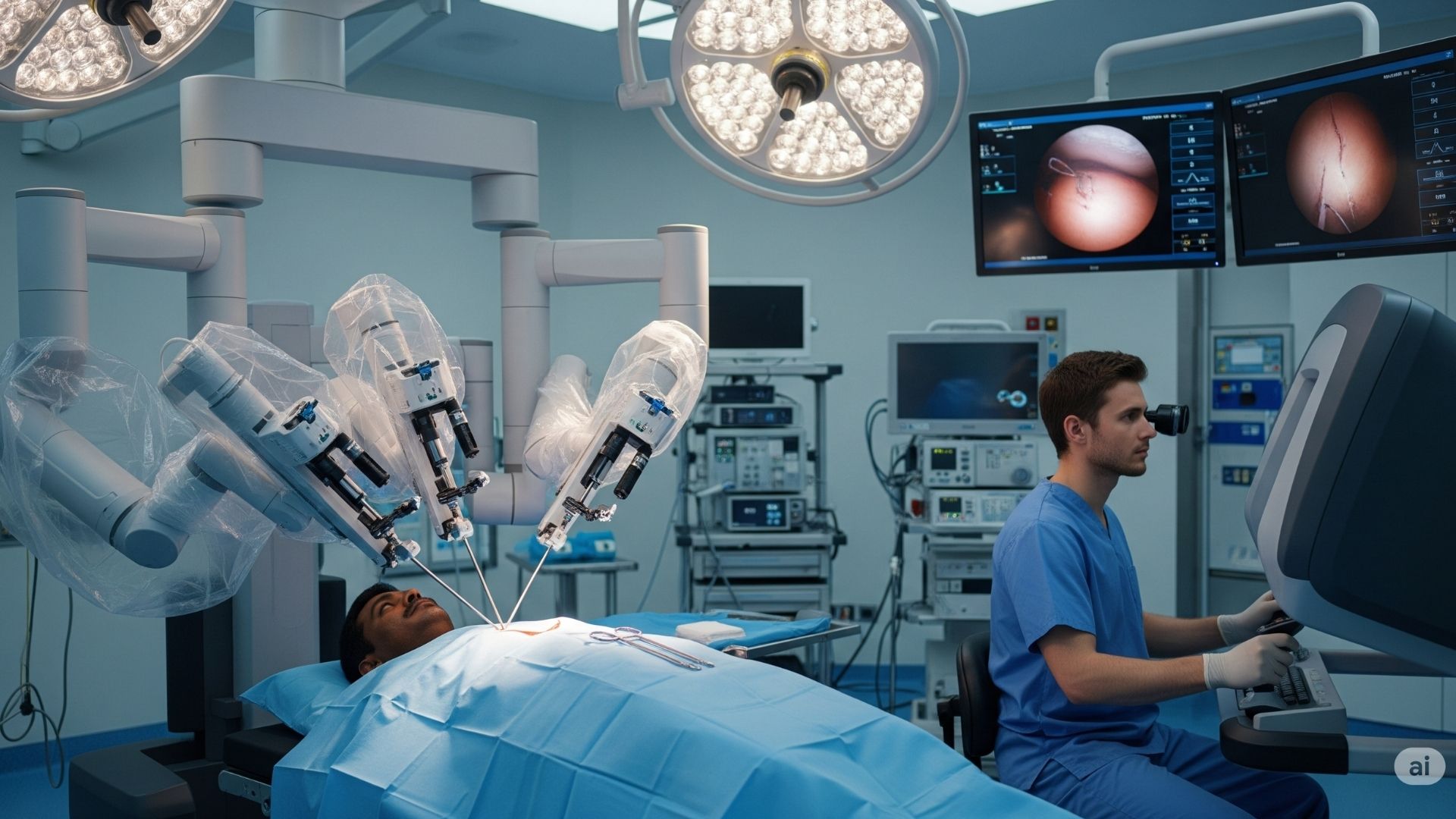Robotic Surgeon
Precision cancer surgeries using advanced robotic surgical technology.
Robotic Surgeon – Precision Meets Innovation in Head & Neck Surgery
What is Robotic Surgery?
Robotic surgery is a cutting-edge, minimally invasive surgical technique that uses advanced robotic systems to perform complex procedures with enhanced precision, control, and access. In head and neck oncology, robotic-assisted surgery offers a revolutionary approach to treating cancers located in hard-to-reach areas such as the throat, base of tongue, and larynx — all while minimizing trauma to surrounding tissues.

Dr. Anand Subash – A Pioneer in Robotic Head & Neck Surgery
Dr. Anand Subash is among the very few head and neck cancer surgeons in India to have received formal, structured training and full credentialing in robotic head and neck surgery. With years of expertise and international fellowships to his credit, including the Yonsei–Intuitive Surgical Grant, he combines clinical excellence with state-of-the-art technology to offer his patients safer surgeries, faster recoveries, and superior functional outcomes.
🔹 Minimally Invasive – No large external cuts or disfigurement
🔹 Greater Precision – Enhanced visualization in confined areas
🔹 Faster Recovery – Reduced hospital stay and quicker return to normal life
🔹 Preserved Function – Better speech, swallowing, and cosmetic outcomes
🔹 Lower Risk of Complications – Less bleeding and infection
- Oropharyngeal (throat) cancers
- Base of tongue tumors
- Tonsil cancers
- Supraglottic and laryngeal cancers
- Parapharyngeal space tumors
- Selected thyroid and skull base surgeries
✅ Among India’s few certified robotic head & neck surgeons
✅ Fellowship-trained in robotic and laser surgery
✅ Program Director for Minimally Invasive Head & Neck Surgery
✅ Focus on organ preservation and post-operative rehabilitation
✅ Personalized treatment with a multidisciplinary approach
Frequently Asked Questions
Yes. When performed by a trained specialist like Dr. Anand Subash, robotic surgery is highly safe and effective for appropriately selected patients.
Most robotic procedures are done through the mouth (transoral), leaving no external scars on the face or neck.
It is generally less painful than open surgery. Most patients experience quicker recovery and less post-operative discomfort.
Candidates are selected based on tumor location, size, and overall health. A detailed evaluation by Dr. Anand will determine eligibility.
Most patients are discharged within 2–3 days, depending on the complexity of the surgery and recovery rate.
